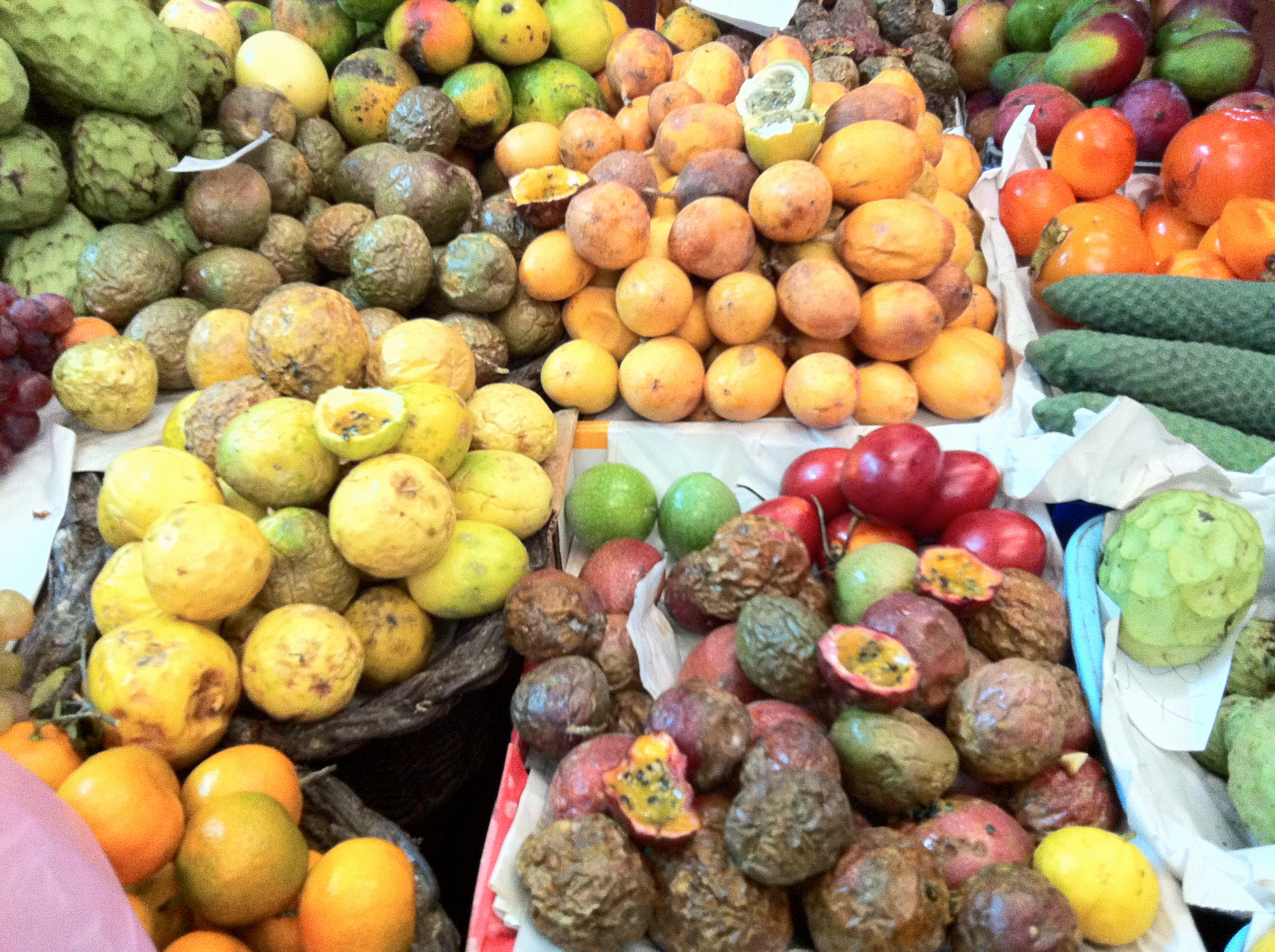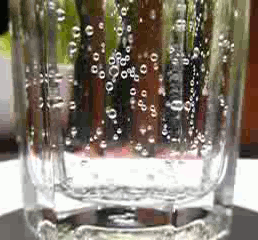|
Fassionola
Fassionola is a typically red colored syrup that is fruit flavored (Passion fruit (fruit), passion fruit and others) that was frequently used in tropical drinks during the 1930s but is now a relatively unusual ingredient. It also comes in green and gold varieties that sometimes are made to taste differently. It is used as a fruit punch concentrate and some claim that a red colored fruit syrup called fassionola was an ingredient in the original Hurricane (cocktail), Hurricane cocktail. Although a frequent attribution, solid evidence of fassionola's use in the Hurricane from before 1956 is lacking, and it is not known what were the precise ingredients in the earliest version of fassionola. Tiki drink usage Claimed to have been first fashioned in 1916, the complete history of fassionola is unclear but is closely associated with Donn Beach (aka, Don the Beachcomber). Beach cites his childhood as growing up near New Orleans, and he sometimes used fassionola in making what came to be kn ... [...More Info...] [...Related Items...] OR: [Wikipedia] [Google] [Baidu] |
Hurricane (cocktail)
The hurricane cocktail is a sweet alcoholic drink made with rum, lemon juice, and either passion fruit syrup or fassionola. It is one of many popular drinks served in New Orleans. It is traditionally served in the tall, curvy eponymous hurricane glass. Disposable plastic cups are also used because New Orleans laws permit drinking in public and leaving a bar with a drink, but prohibit public drinking from glass containers. History Currently the oldest known references to the hurricane cocktail date the drink’s creation back to at least 1938. In 1939 in Queens, New York, it was served at the 1939-1940 New York World's fair at the "Hurricane Bar" but it’s unknown what ingredients were used to prepare the Hurricane drinks that were sold at the exhibition. The best representation of the original recipe and look of the Hurricane drink is depicted in the October- December 1938 produced/July 1939 released the Warner Bros. film '' Naughty But Nice'', where the original hurricane drink ... [...More Info...] [...Related Items...] OR: [Wikipedia] [Google] [Baidu] |
Passion Fruit (fruit)
The passion fruit is the fruit of a number of plants in the genus ''Passiflora''. Etymology The passion fruit is so called because it is one of the many species of passion flower, the English translation of the Latin genus name, ''Passiflora'', and may be spelled "passion fruit", "passionfruit", or "passion-fruit". Around 1700, the name was given by missionaries in Brazil as an educational aid while trying to convert the indigenous inhabitants to Christianity; its name was ''flor das cinco chagas'' or "flower of the five wounds" to illustrate the crucifixion of Christ and his resurrection, with other plant components also named after an emblem in the Passion of Jesus. History The passion fruit was first introduced to Europe in 1553. Appearance and structure Passion fruits are round or oval, and range from a width of 1.5 to 3 inches. They can be yellow, red, purple, and green. The fruits have a juicy edible center composed of a large number of seeds. Varieties Well known edi ... [...More Info...] [...Related Items...] OR: [Wikipedia] [Google] [Baidu] |
Falernum
Falernum (pronounced ) is either an 11% ABV syrup liqueur or a nonalcoholic syrup from the Caribbean. It is best known for its use in tropical drinks. It contains flavors of ginger, lime, and almond, and frequently cloves or allspice. It may be thought of as a spicier version of orgeat syrup. The form can be alcoholic (syrup liqueur) or nonalcoholic (syrup). Versions with alcohol are generally lower in proof (≅15 ABV), adding rum and emphasizing the clove, ginger, or allspice flavoring aspects for use in mixing cocktails, typically tropical or tiki drinks. It is also enjoyed on the rocks. Depending on sugar content, the consistency is often thick and is therefore sometimes referred to as "velvet falernum" because of the feeling it leaves on one's tongue. Brands vary and the color can be white to light amber, and it may be clear or translucent. History The origination of falernum may date back to the 18th century, when it was made as a punch in the areas around Barbados. ... [...More Info...] [...Related Items...] OR: [Wikipedia] [Google] [Baidu] |
Orgeat Syrup
Orgeat syrup is a sweet syrup made from almonds, sugar, and rose water or orange flower water. It was originally made with a barley-almond blend. It has a pronounced almond taste and is used to flavor many cocktails. Orgeat syrup is an important ingredient in the Mai Tai and many Tiki drinks. History An early recipe for orgeat can be found in ''The English and Australian Cookery Book'': Bitter almonds as a general rule contain cyanide and can be lethal in large quantities. For this reason modern syrups generally are produced only from sweet almonds. Such syrup products do not contain significant levels of hydrocyanic acid, so are generally considered safe for human consumption unless the person is allergic. Word origin The word ''orgeat'' () is derived from the Latin 'made with barley' through the French, where barley is called . The Catalan word , from which derives the Spanish , has the same origin, though today the two drinks have little else in common and neither of them ... [...More Info...] [...Related Items...] OR: [Wikipedia] [Google] [Baidu] |
Pog (drink)
POG, or Passion Orange Guava, is a tropical juice drink created in 1971 by a food product consultant named Mary Soon, who worked for Haleakala Dairy on Maui, Hawaii. The name ''POG'' is an acronym for three fruits from which it is made: passionfruit, orange (fruit), orange, and guava. POG is produced by Meadow Gold Dairies (Hawaii), Meadow Gold Dairy, a subsidiary of Dean Foods. Similar blends of passionfruit, orange and guava juices are also produced by other companies. The game of milk caps The caps used to seal milk bottles inspired the fad game Pogs (or "milk caps"), which became popular during the early- to mid-1990s.Lewis, Tommi: "Pogs: The Milkcap Guide", page 23. Andrews and McMeel, 1994 The game of pogs possibly originated in Maui, Maui, Hawaii in the 1920s or 1930s. Although POG juice was never sold in bottles with cardboard milk caps, the two became associated after Haleakala Dairy gave away caps printed with the POG logo as a marketing promotion in the 1970s. The ... [...More Info...] [...Related Items...] OR: [Wikipedia] [Google] [Baidu] |
Drink Mixers
Drink mixers are the non-alcoholic ingredients in mixed drinks and cocktails. Mixers dilute the drink, lowering the alcohol by volume in the drink. They change, enhance, or add new flavors to a drink. They may make the drink sweeter, more sour, or more savory. Some mixers change the texture or consistency of the drink, making it thicker or more watery. Drink mixers may also be used strictly for decorative purposes by changing the color or appearance of the drink. They also simply increase the volume of a drink, to make it last longer. Caffeinated beverages Caffeine, a stimulant, masks some of the depressant effects of alcohol. * Coffee * Energy drinks – Red Bull, etc. * Iced tea, sweetened – Lipton BRISK, Nestea, etc. Carbonated mixers and sodas Carbonation adds a festive flair to drinks. It also increases the absorption of the alcohol into the blood stream due to increased pressure in the stomach, potentially resulting in faster intoxication. Retrieved 5 December 2 ... [...More Info...] [...Related Items...] OR: [Wikipedia] [Google] [Baidu] |
Vox Media, Inc
Vox Media, Inc. is an American mass media company based in Washington, D.C., and New York City. The company was established in November 2011 by Jim Bankoff and Trei Brundrett to encompass '' SB Nation'' (a sports blog network founded in 2005 by Tyler Bleszinski, Markos Moulitsas, and Jerome Armstrong) and ''The Verge'' (a technology news website launched alongside Vox Media). Bankoff had been the CEO for ''SB Nation'' since 2009. Vox Media owns editorial brands, primarily ''The Verge'', '' Vox'', ''SB Nation'', ''Eater'', ''Polygon'', and '' New York''. ''New York'' further incorporates the websites ''Intelligencer'', ''The Cut'', ''Vulture'', ''The Strategist'', '' Curbed'', and ''Grub Street''. The former '' Recode'' was integrated into ''Vox'', while ''Racked'' was shut down. Vox Media's brands are built on Concert, a marketplace for advertising, and Chorus, its proprietary content management system. The company's lines of business include the publishing platform Chorus, C ... [...More Info...] [...Related Items...] OR: [Wikipedia] [Google] [Baidu] |
Don The Beachcomber
Don, don or DON and variants may refer to: Places *County Donegal, Ireland, Chapman code DON *Don (river), a river in European Russia *Don River (other), several other rivers with the name *Don, Benin, a town in Benin *Don, Dang, a village and hill station in Dang district, Gujarat, India *Don, Nord, a ''commune'' of the Nord ''département'' in northern France *Don, Tasmania, a small village on the Don River, located just outside Devonport, Tasmania *Don, Trentino, a commune in Trentino, Italy * Don, West Virginia, a community in the United States *Don Republic, a temporary state in 1918–1920 *Don Jail, a jail in Toronto, Canada People Role or title *Don (honorific), a Spanish, Portuguese, and Italian title, given as a mark of respect *Don, a crime boss, especially in the Mafia , ''Don Konisshi'' (コニッシー) *Don, a resident assistant at universities in Canada and the U.S. *University don, in British and Irish universities, especially at Oxford, Cambridge, St An ... [...More Info...] [...Related Items...] OR: [Wikipedia] [Google] [Baidu] |
Tiki Bar
A tiki bar is a themed drinking establishment that serves elaborate cocktails, especially rum-based mixed drinks such as the Mai Tai and Zombie cocktails. Tiki bars are aesthetically defined by their tiki culture décor which is based upon a romanticized conception of tropical cultures, most commonly Polynesian. Some bars also incorporate general nautical themes or retro elements from the early atomic age. Many early tiki bars were attached to hotels or were the bar sections for large Asian restaurants. While some are free-standing, cocktail-only affairs, many still serve food; and some hotel-related tiki establishments are still in existence. Large tiki bars may also incorporate a stage for live entertainment. Musicians such as Alfred Apaka and Don Ho played a historically important role in their popularity, and also book acts with other exotica-style bands and Polynesian dance floor shows. History Don the Beachcomber One of the earliest and perhaps the first of what is no ... [...More Info...] [...Related Items...] OR: [Wikipedia] [Google] [Baidu] |
Trader Vic's
Trader Vic's is a restaurant and tiki bar chain headquartered in Emeryville, California, United States. Victor Jules Bergeron, Jr. (December 10, 1902 in San Francisco – October 11, 1984 in Hillsborough, California) founded a chain of Polynesian-themed restaurants that bore his nickname, "Trader Vic". He was one of two people who claimed to have invented the Mai Tai. The other was his amicable competitor for many years, Donn Beach of the "Don the Beachcomber" restaurants. History Bergeron attended Heald College in San Francisco. On November 17, 1934, using $500 in borrowed money, Bergeron opened a small bar/restaurant across from his parents' grocery store at San Pablo Avenue and 65th Street in the Golden Gate District of Oakland. He named it Hinky Dink's. As its popularity spread, the menu and decor developed an increasingly tropical flair, and Hinky Dink's soon became Trader Vic's. In 1949, Western Hotels executive Edward Carlson convinced Bergeron to open his first fra ... [...More Info...] [...Related Items...] OR: [Wikipedia] [Google] [Baidu] |





.jpg)
_(12001586684).jpg)